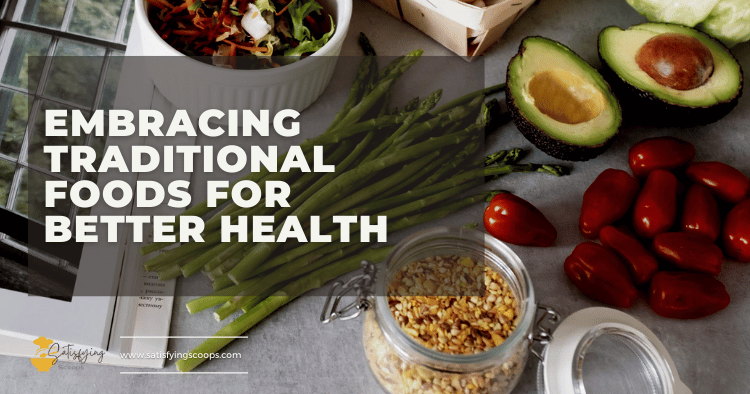Table of Contents
- Introduction
- The Importance of Traditional Foods
- Health Benefits of Traditional Foods
- Examples of Traditional Foods from Around the World
- How to Incorporate Traditional Foods into Your Diet
- FAQs about Traditional Foods and Health
- Conclusion
Introduction
In a world increasingly dominated by fast food and processed meals, traditional foods are a treasure trove of nutrition and flavor that deserve our attention. Embracing these time-honored culinary practices can lead to a healthier lifestyle while also connecting us to our cultural roots. In this blog post, we’ll explore the significance of traditional foods, their health benefits, and how you can incorporate them into your everyday diet.
The Importance of Traditional Foods
Traditional foods are those that have been passed down through generations, often deeply connected to cultural and regional identities. They are typically prepared using methods and ingredients that are local to the area. Here’s why these foods matter:
- Cultural Significance: Traditional foods tell a story about the people and places they originate from.
- Seasonal Eating: Many traditional diets emphasize eating locally and seasonally, which is not only sustainable but also healthier.
- Nutrient Density: Often, these foods are more nutrient-dense compared to modern, processed alternatives.
For more information about the cultural significance of traditional foods, check out National Geographic.
Health Benefits of Traditional Foods
Incorporating traditional foods into your diet can have a multitude of health benefits:
- Rich in Nutrients: Traditional diets often feature whole grains, legumes, fruits, and vegetables that are high in vitamins, minerals, and fiber.
- Better Digestion: Fermented foods like kimchi or sauerkraut, staples in many cultures, promote gut health through probiotics.
- Lower Risk of Chronic Diseases: Diets rich in antioxidants, found in many traditional foods like berries and leafy greens, can lower the risk of diseases such as heart disease and diabetes.
- Sustainable Eating: Traditional diets often rely on sustainable farming practices, which can help reduce environmental impact.
Table: Nutritional Comparison of Traditional vs. Processed Foods
| Nutrient | Traditional Foods | Processed Foods |
|---|---|---|
| Fiber | High | Low |
| Sugar | Low | High |
| Healthy Fats | Present | Often absent |
| Preservatives | None | Common |
Examples of Traditional Foods from Around the World
Here are some traditional foods that showcase the diversity of global cuisines:
- Mediterranean Diet: Olive oil, legumes, whole grains, and a variety of vegetables.
- Japanese Cuisine: Rice, fish, seaweed, and fermented soy products like miso and natto.
- Indian Cuisine: Spices, lentils, whole grains, and a variety of vegetables.
- Mexican Cuisine: Corn, beans, avocados, and a variety of peppers.
- African Cuisine: Millet, sorghum, and a variety of root vegetables.
These examples not only highlight the variety but also the health benefits that come from consuming these diverse food sources.
How to Incorporate Traditional Foods into Your Diet
Making traditional foods a part of your diet doesn’t have to be difficult. Here are some practical tips:
- Explore Local Markets: Visit farmers’ markets to find fresh, seasonal ingredients.
- Cook at Home: Experiment with traditional recipes from different cultures. Websites like AllRecipes and BBC Good Food offer a plethora of international recipes.
- Join a Cooking Class: Look for classes that focus on traditional cuisines to learn techniques and ingredients.
- Be Adventurous: Don’t hesitate to try new dishes or ingredients that are unfamiliar to you.
FAQs about Traditional Foods and Health
Q1: Are traditional foods better than modern diets?
A: Traditional foods are often less processed and more nutrient-dense, making them a healthier option. However, a balanced diet that suits your specific needs is crucial.
Q2: Can I still eat modern foods while incorporating traditional foods?
A: Absolutely! The key is moderation. You can enjoy modern foods while prioritizing traditional ingredients and methods.
Q3: How do I know if a food is traditional?
A: Look for foods that have been consumed in a particular culture for generations, typically made from local ingredients.
Conclusion
Embracing traditional foods is not just about health; it’s about celebrating culture, sustainability, and community. By integrating these nutrient-rich foods into your diet, you can enjoy better health and foster a deeper connection to your culinary heritage. So why not take the plunge and explore the satisfying scoops of traditional foods today? Your body and taste buds will thank you!
For further exploration of the health benefits of traditional foods, visit the World Health Organization.
By embracing traditional foods, you’re not only nourishing your body but also keeping ancient culinary practices alive for future generations. Happy eating!
Last modified: December 31, 2024




